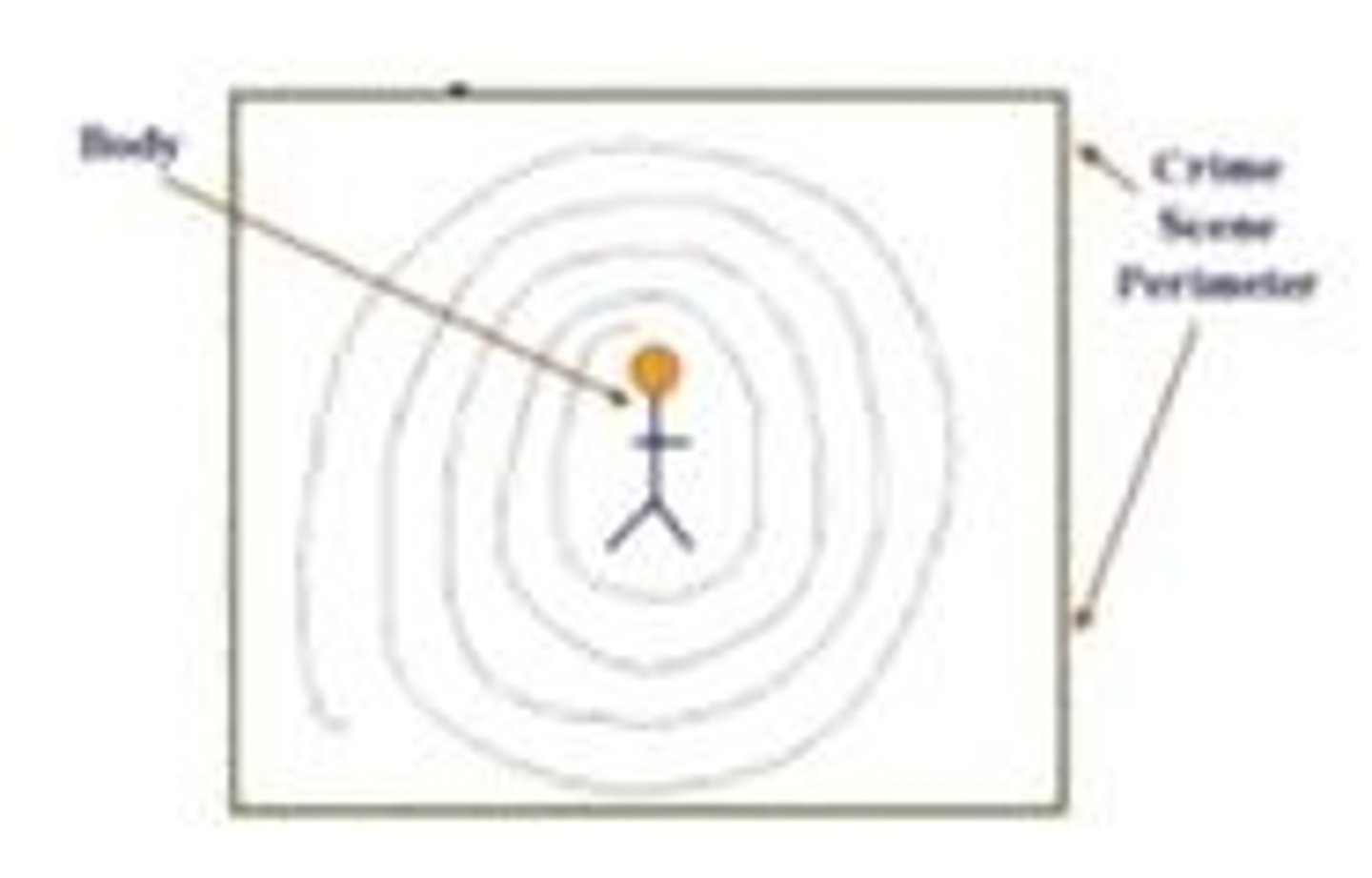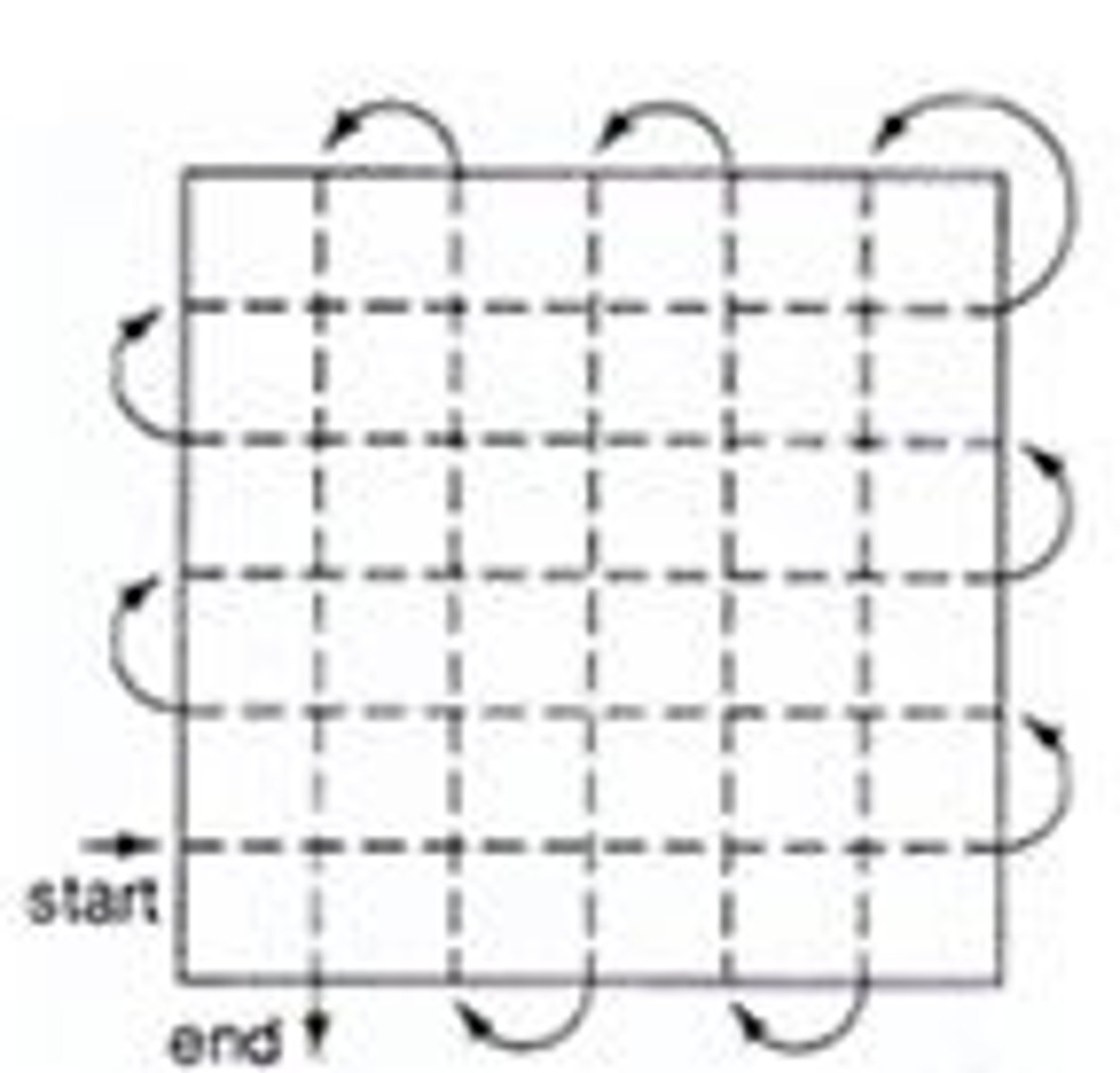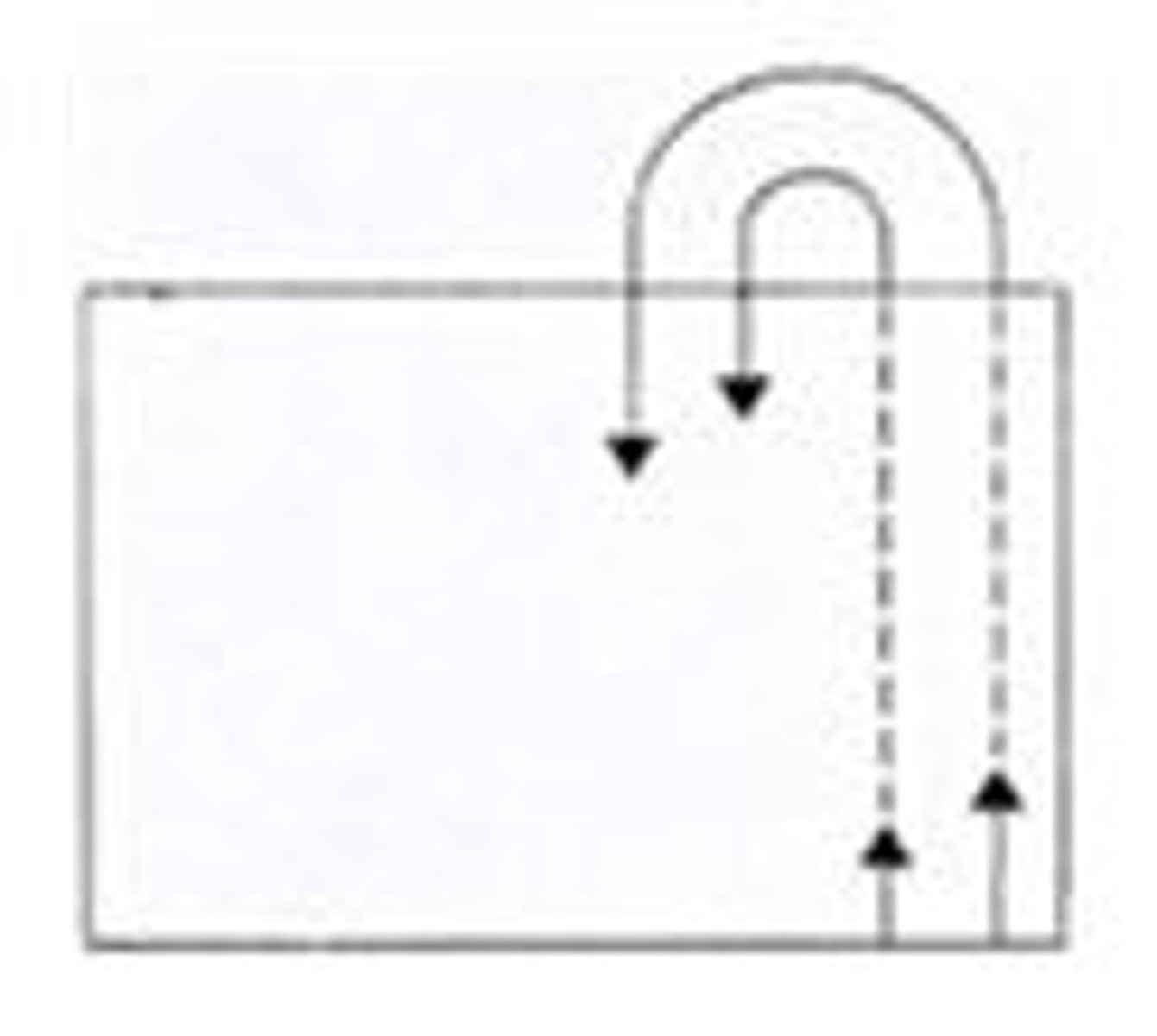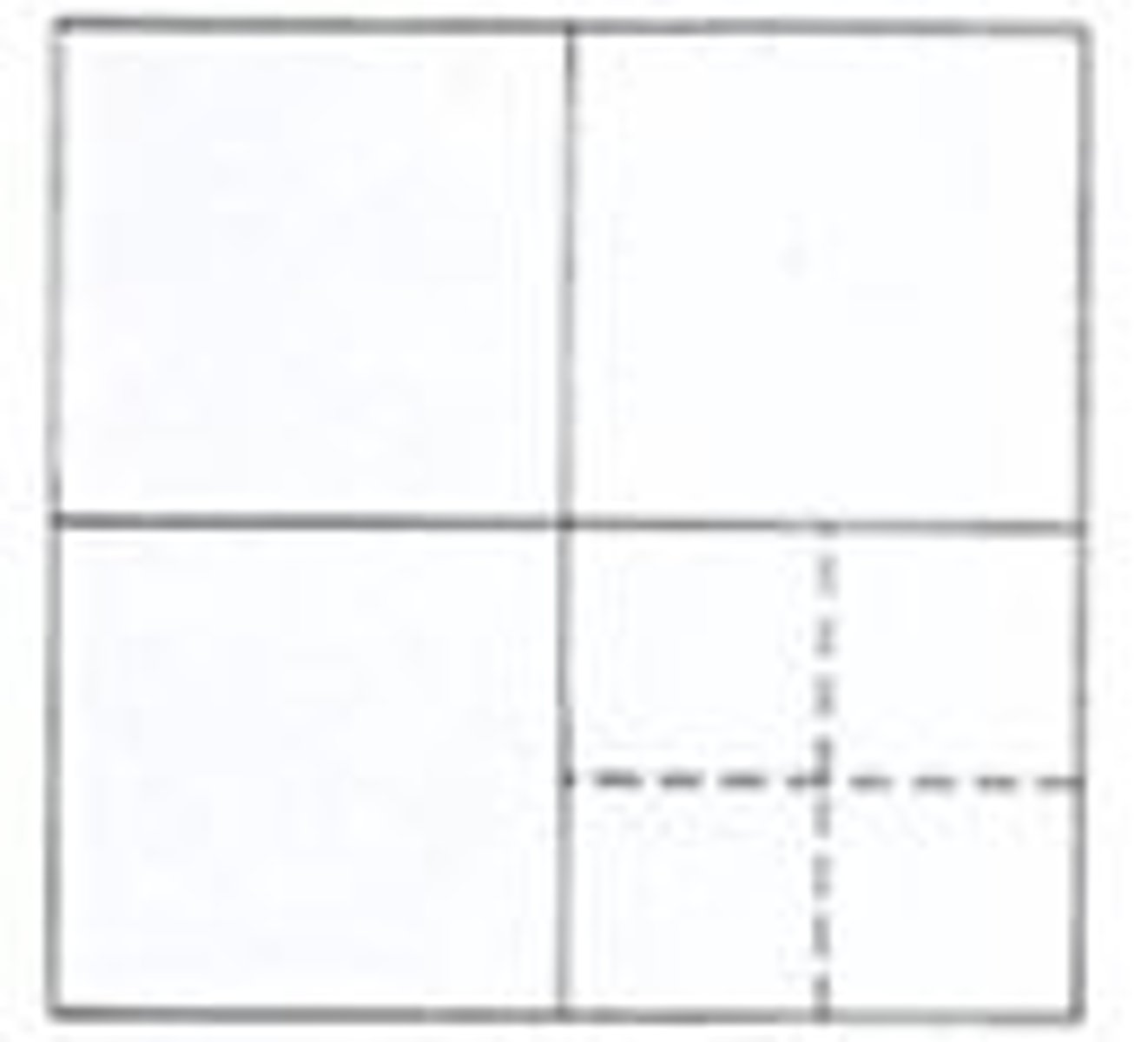Forensics- Ch. 2 The Crime Scene
1/42
There's no tags or description
Looks like no tags are added yet.
Name | Mastery | Learn | Test | Matching | Spaced |
|---|
No study sessions yet.
43 Terms
Locard's Exchange
This principle states that whenever 2 objects come in contact with one another, a cross-transfer of physical evidence can occur
intensity, duration, nature of the crime
The three factors affect the amount of evidence transferred during a crime
direct
Firsthand observations such as eyewitness account, videos, confessions are classified as this type of evidence
circumstantial
Indirect evidence that can be used to imply a fact but does not directly prove it
physical
Synthetic fibers, weapons, bullets, shell casings, paint chips, documents, imprints and prints (shoes, tires, etc), toolmarks, soil, and drugs are considered this type of circumstantial evidence
biological
Bodies or body parts, body fluids, hair, leaves or other plant parts, natural fibers, feathers, and wood are considered this type of circumstantial evidence
trace
Evidence which consists of small but measurable amounts of physical or biological material
class
This type of evidence narrows down the suspects to a group of persons or things
individual
This type of evidence narrows down the suspects to a single person or thing
district attorney
The elected or appointed official who represents the government in the prosecution of criminal offenses
first responding police officer
Whose duty is it to make sure the scene is secure by first making sure all individuals in the area are safe and second by preserving evidence?
Reason why members of the crime scene investigation team must all wear protective gear (gloves, etc.)
prevent contamination
Reason why members of the crime scene investigation team must separate witnesses at a crime scene
prevent them from forming a collusion
Innocence Project
A non-profit legal organization that is committed to exonerating wrongly convicted people through the use of DNA testing
eyewitness misidentification
The single greatest cause of wrongful convictions nationwide
DNA
In 75% of their cases, the Innocence Project has been able to free individuals from prison for wrongful convictions using this type of evidence
primary
The crime scene where the crime actually occurred
secondary
A crime scene that is in some way related to the crime but is not where the actual crime took place
photography
This crime scene unit takes pictures of the overall area and close up photos with and without a measuring ruler
north
An arrow should be drawn on a crime scene sketch to show this direction
forceps
This tweezer-like tool should be used to pick up small evidence to prevent contamination
arson
Evidence remaining from this type of crime need to be stored in airtight, unbreakable containers
mold
Bloodstained materials must be packaged in wrapping paper, manila envelopes, or paper bags to prevent the growth of this on the evidence
paper bindle
A way of folding paper to hold small evidence; also known as a druggist's fold
signature of the collector
What needs to be written across the tape of an evidence container?
chain of custody
A list of all persons who came into possession of an item of evidence
admissible
Term for acceptable or valid evidence used in a court of law
control
These types of samples should be taken from the victim for purposes of exclusion
standard
Term for reference samples obtained from the victim, family members, any paramedics/police officers who may have been in the crime scene, suspects, and other known sources; also used for purposes of exclusion
buccal
Term used to describe a cheek swab to collect cells for comparison with evidence
lead detective
This individual receives the lab results after evidence has been tested by the crime lab
homicide
Initially all death investigations should be treated as this type of crime
4th
Any removal of evidence from a crime scene must be in accordance with this Amendment
search warrant
A legal document authorizing a police officer or other official to enter and examine a home or business
The two most important factors when securing a crime scene
make sure all individuals are safe, preserve evidence
seven S's of crime scene investigation
Secure the scene, Separate the witnesses, Scan the scene, See the scene, Sketch the scene, Search for evidence, Secure and collect evidence
spiral
Name this pattern used to search for evidence

grid
Name this pattern used to search for evidence

linear
Name this pattern used to search for evidence

quadrant or zone
Name this pattern used to search for evidence

double-blind procedure
When the person administering a suspect line-up does not know who the suspect is and makes sure to tell the victim they do not know who the suspect is
circumstances in which a crime scene can be searched without a warrant
under emergency circumstances, if there is immediate danger of the loss or destruction of evidence, if there is probable cause — the search of a person and their immediate property in conjunction with a lawful arrest, or with the consent of the involved parties
When photographing a piece of evidence at the crime scene, list the three ways it should be photographed
A photo of the evidence in relation to the overall crime scene (location), close-up of evidence with a ruler, and close-up of evidence without a ruler